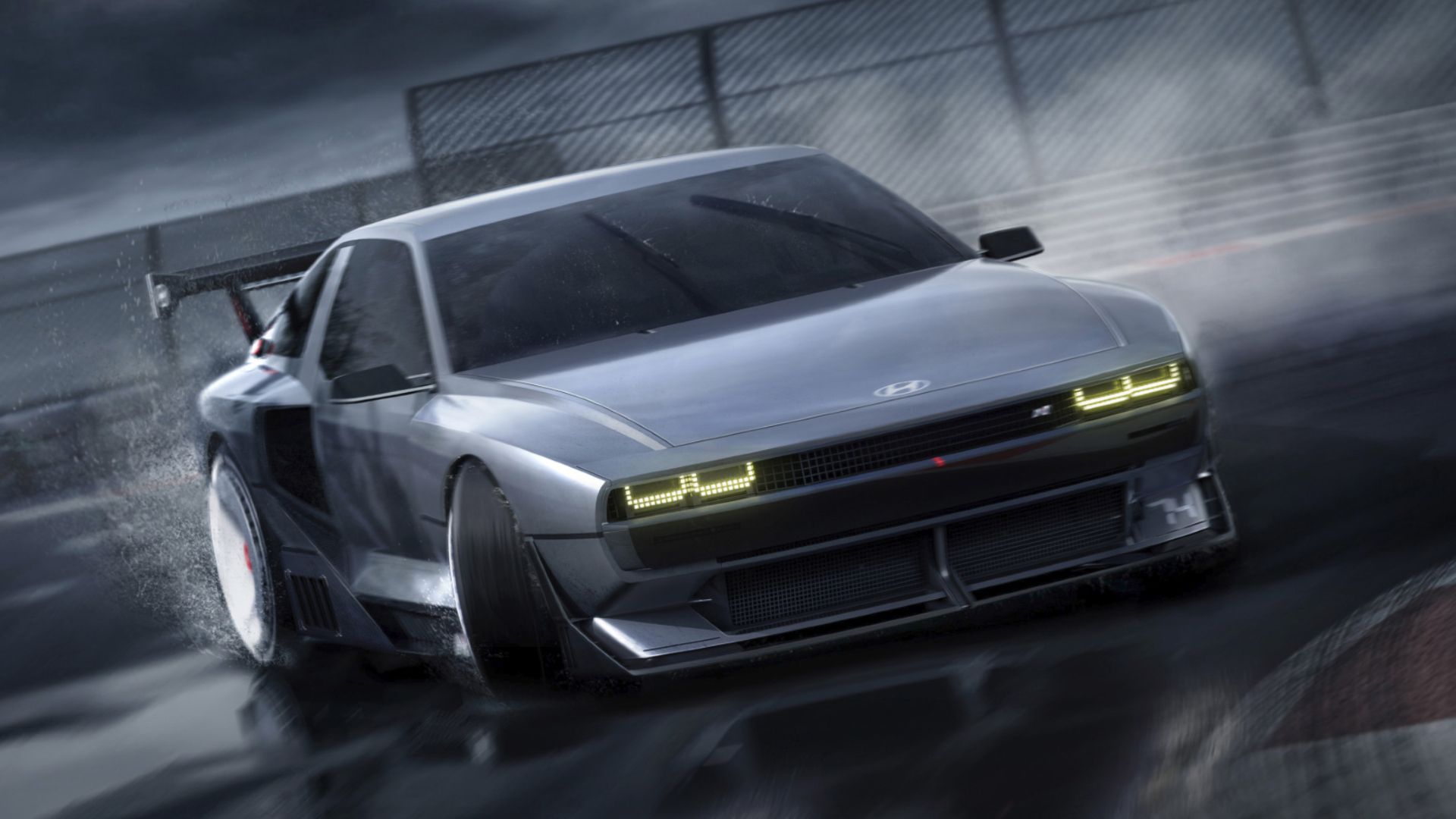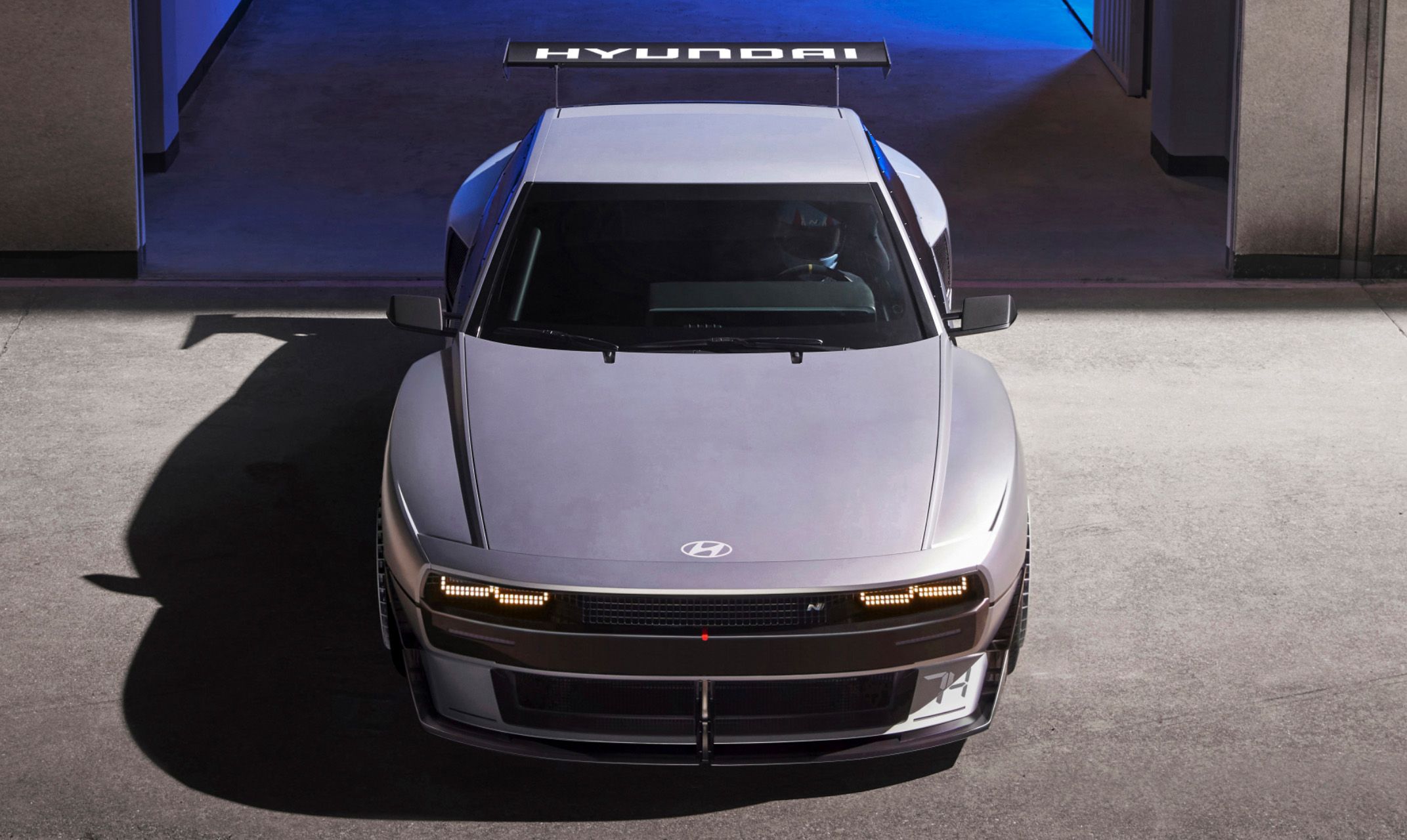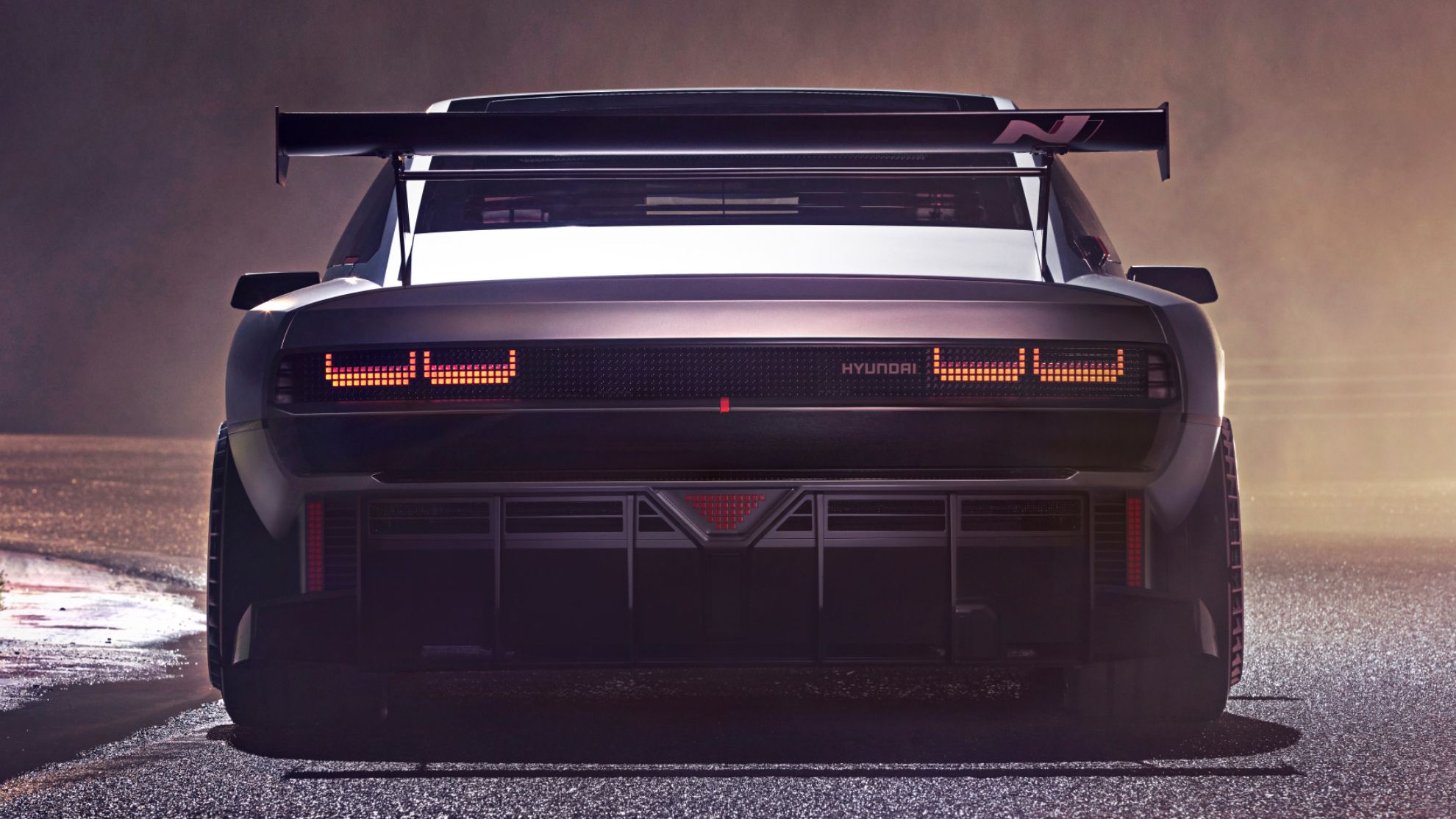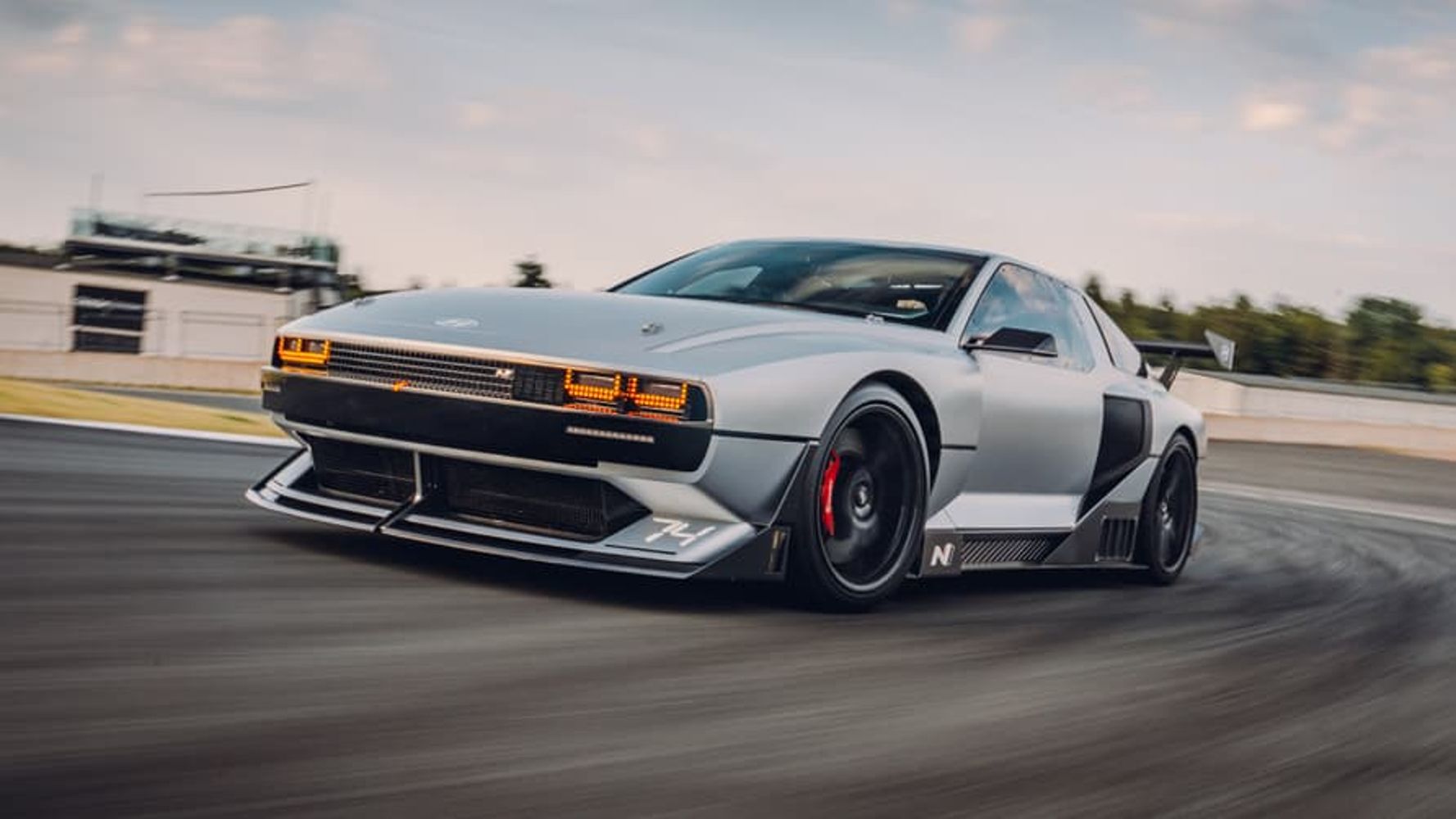In recent years, different mediums have been leading us to believe that EVs are the future of mobility. While it may, partially, be true, hydrogen is, once again, on the table and this time, it seems to be here for the long ride. Hyundai is one of the carmakers that seriously considers hydrogen as a viable alternative to electrification. The Hyundai N Vision 74 is one of the latest examples of that. The neo-retro-styled performance model is, as described by Hyundai, “the first Hydrogen Hybrid rolling lab”. While currently a concept model, a Hyundai Exec in charge of running Hyundai’s N division expressed willingness to make a production version of the N Vision 74. Sports cars are not exactly a golden goose for car manufacturers, but there are a few reasons why a production version of the Hyundai N Vision 74 would be a wise move for Hyundai.
A Proper, Neo-Retro Sports Car From South Korea
Hyundai has never been the first choice when it comes to sports cars. The brand may have had decent attempts at making sportier models, some of which were quite competent, but the stigma of affordable econo-boxes still haunts the brand, despite its best efforts. Nevertheless. Hyundai has been on a role, producing attractive models at sensible prices. And while the brand’s mainstream design leaves something to be desired, Hyundai seems to be nailing it with retro-futuristic styling.
It started with the 35th anniversary of the Hyundai Grandeur, which was celebrated with the 2021 Hyundai Grandeur Heritage Series, which is an all-electric restomod based on the 1986 model. This was followed by an actual, seventh generation of the Grandeur for the 2023 model year, which combined modern design traits with classic ones. Then came the Hyundai N Vision 74, which at first glance, seems to be a mashup of De Lorean, third-generation Toyota Supra, C4 Corvette, and Nissan 280ZX.
In reality, the inspiration for the N Vision 74 comes from an even earlier model – the 1974 Hyundai Pony Coupe Concept, designed by none-other than Giorgetto Giugiaro. The wedge-shaped, Korean coupe with Italian styling could have been Hyundai’s first sporty model, but it was never mass-produced. Vice President of Hyundai N division and Motorsport, Till Wartenberg, recently sat down for an interview with The Autopian, where he talked about the N Vision 74 Concept. “My personal wish is to produce this vehicle. It’s at first probably an investment, but if we could see this vehicle really out there and people buying it, I would be very happy”, Tim Wartenberg said while interviewed. For a Hyundai, we would normally answer with anything that is below a six-figure price, but given the car’s drivetrain and performance capabilities (more on that in a bit), we might not walk away with one for under $100,000…if Hyundai decides to green-light the project, of course.
The Potential For An Affordable High-Performance Sports Car
When we say "affordable", we mean relatively, as nothing so high on the performance food chain is easily-attainable by someone named "Joe Average". Hyundai is testing the waters in order to figure out how a production version of the N Vision 74 should position in terms of the price range. While interviewed by the Autopian, Tim Wartenberg asked “What would you pay for an N Vision 74 if it was produced?” This is where things start to get a bit complex. Hyundai is still somewhat plagued by the reputation of a budget carmaker, despite having a comprehensive lineup of great models.
When you factor in the twin-electric traction motors, good for 670 horsepower (500 kilowatts) and 664 pound-feet (900 Nm), things start to look a bit different. Hyundai says that 0 to 60 mph (97 km/h) happens in around 4.0 seconds while the top speed is over 160 mph (258 km/h). These are theoretical figures, so they might go either way (most likely up). With both electric motors located at the rear axle (one per wheel), this allows for active torque-vectoring with potential to emulate a limited-slip differential. Hyundai engineers are considering adding a third electric motor at the front, which would give the N Vision 74 all-wheel-drive capabilities.
An Opportunity To Make The First Hydrogen-Electric Sports Car
The Hyundai N Vision 74’s drivetrain is an interesting one as it draws energy from a 62.4kWh battery pack, which provides “juice” for the two traction motors at the rear axle. Additionally, there is a hydrogen fuel cell with maximum output of 114 horsepower (85 kilowatts) and hydrogen fuel tanks storing up to 9.3 pounds (4.2 kg). The good thing is the N Vision 74 boasts a range of 372 miles (599 km) on a WLTP cycle. But there is a heavy price for combining the best of hydrogen cars and EVs. Because of the drivetrain's multiple components, the curb weight is 5,450 pounds (2,472 kg).
A production version of the car may be lighter since the concept is a bit of a parts-bin special. The N Vision 74 shares a lot of hardware with existing models, including the traction motors, which can be found on the IONIQ 5 and IONIQ 6 models. Key structural elements come from the Genesis G70 while the hydrogen storage system comes from the Hyundai Nexo. With that said, a production version will likely still be based on the company’s E-GMP platform.
The Car That Broke The Internet
The Hyundai N Vision 74 managed to take the internet by storm. No one expected an epic, mid-1970s mashup of wedge-shaped forms and high-performance hydrogen-electric powertrain, especially from Hyundai. Regardless of whether the production version will be hydrogen, electric, or gasoline-powered, the car’s main selling point will be the looks.





